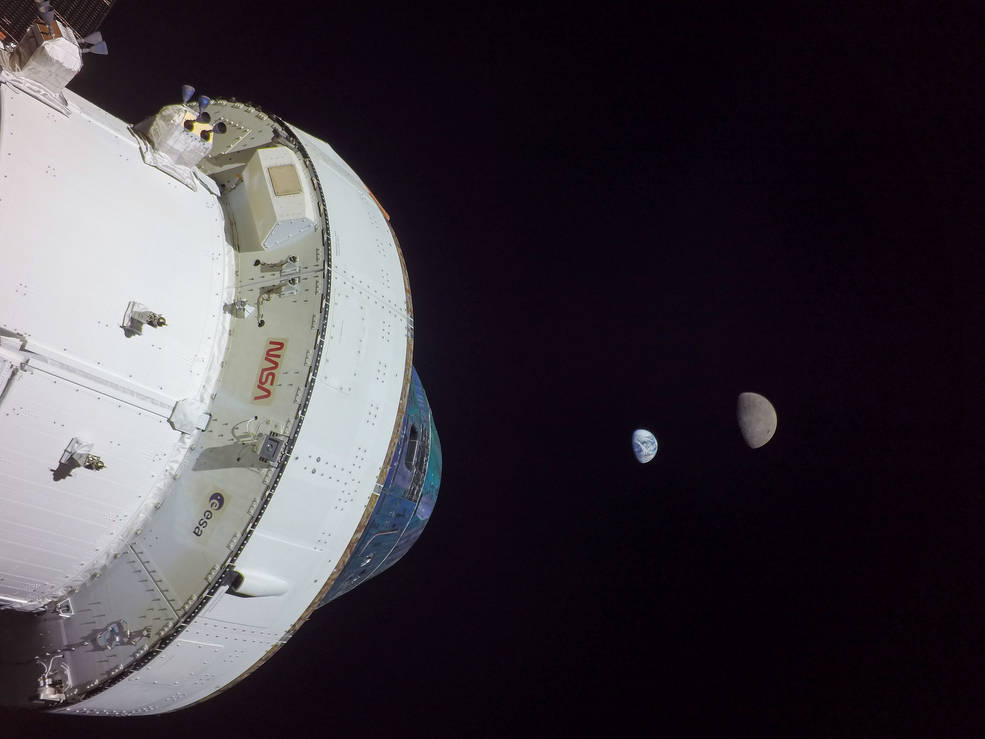
The crew of Apollo 8 had a lot of things on their minds when they splashed down in the Pacific Ocean on Dec. 27, 1968, after becoming the first humans to orbit the moon—and one of the biggest was the matter of the sharks. The spacecraft hit the water at 4:51 a.m. Hawaiian-Aleutian time, more than an hour before the Pacific sunrise. A recovery crew of Navy frogmen was standing by on the nearby USS Yorktown, but they dared not jump into the water until day broke—and the astronauts dared not exit their spacecraft—because sharks prowl in the predawn darkness. Only when the sun came up would it be safe to attempt a recovery.
Landing in a daylit part of the world would have clearly been preferable, but back in the Apollo era, returning lunar astronauts could not be so choosy. Once they hit the atmosphere they were essentially in free-fall, flying at a steep angle and eventually splashing down 2,776 km (1,725 mi.) from their point of atmospheric entry. If that happened to be in dark, shark-infested waters, well, that was the price you paid for going to the moon.
Things are different today. When Artemis 1’s Orion spacecraft returns to Earth this Sunday, Dec. 11, after its 25-day lunar orbital mission, it will execute a never-before-tried means of reentry that will allow its guidance system to land it anywhere—and at any time—mission planners choose within an 8,890 km (5,524 mi) range. Want to land in daylight? Done. Want to land just 80 km (50 mi.) off the coast of San Diego at precisely 12:40 p.m. Eastern Time, as is currently planned? Not a problem. That, of course, is provided that that never-before-tried maneuver works as intended—and that is a worry that is surely causing some NASA personnel a few sleepless nights.
Read more: Inside NASA’s Struggle to Launch America Back to the Moon
Reentering the atmosphere from Earth orbit is a relatively easy thing: a matter of firing retro-rockets and slowing the spacecraft’s velocity below the 28,160 km/h (17,500 mph) speed necessary to maintain orbit. After that, the ship basically falls from the sky.
Returning from the moon is a different matter. In order to reenter the atmosphere safely, the ship must aim for a keyhole in the sky just 24 km (15 mi.) wide. That sounds like a mighty big target, but if the Earth was the size of a basketball and the moon the size of a baseball, and the two were placed 6.7 m (22 ft.) apart—the relative translunar distance at that scale—the reentry target would be no thicker than a piece of paper. Miss it and enter too steeply, and the spacecraft would not survive the heat of reentry; miss it and enter too shallowly and the spacecraft would simply skip off the atmosphere and bounce back into space.
More from TIME
Even a bullseye hit on that tiny target—which all nine Apollo lunar crews pulled off—did not make for a pleasant ride. The astronauts had to endure forces of 6.8 g’s (or 6.8 times Earth’s gravity) on the way down before their speed slowed, their parachutes opened, and they hit the water.
Artemis 1’s return will improve on things by attempting what flight engineers call a “skip entry.” When the Orion capsule enters the 24 km-wide keyhole in the atmosphere it will be traveling at a speed of more than 32,000 km/hr (20,000 mph). The atmospheric friction from entering so fast will cause the temperature on its heat shield to rise throughout the descent process to a peak of 2,760º C (5,000º F).
Read more: NASA’s Mega-Moon Rocket Finally Blasts Off, Heralding America’s Lunar Return
The uncrewed spacecraft will initially plunge to an altitude of 61,000 m (200,000 ft.)—or about 61 km (38 mi.). Then it will pull off a fancy bit of flying. Rolling 180 degrees—so that future astronauts who were sitting straight up inside would now be upside down—it will change its center of gravity, causing it to skip off the atmosphere, just as it would on a too-shallow reentry, but not so hard and fast that it would fly off into space. Instead, it will climb back up to 99,000 m (325,000 ft)—or 99 km (61 mi)—essentially taking it back into space. After that parabolic maneuver, it will resume its descent, with its guidance system pointing it straight for the waters off of San Diego.
The skip entry not only increases the spacecraft’s reentry footprint, it also reduces the temperature load on the heat shield, as the ship briefly roller coasters back into the chill of space. What’s more, astronauts on board would have an easier ride: dividing the reentry into two parts this way reduces the maximum g-forces from 6.8 to just 4.
The skip entry concept was around in the days of Apollo—and the physics certainly aren’t any different now from what they were then. But the power of the guidance computer aboard the spacecraft—not to mention the computer modeling that has allowed the maneuver to be run and rerun on the ground first—did not exist at the time, making the maneuver too risky a trick to try. This Sunday—54 years after the return of Apollo 8—the entry maneuver will at last be attempted. If all goes well, the next time it’s tried will be in 2024, when Artemis 2 carries a crew of astronauts around the moon—bringing them back to Earth for a smooth and close-to-home splashdown.
More Must-Reads from TIME
- Cybersecurity Experts Are Sounding the Alarm on DOGE
- Meet the 2025 Women of the Year
- The Harsh Truth About Disability Inclusion
- Why Do More Young Adults Have Cancer?
- Colman Domingo Leads With Radical Love
- How to Get Better at Doing Things Alone
- Michelle Zauner Stares Down the Darkness
Write to Jeffrey Kluger at jeffrey.kluger@time.com